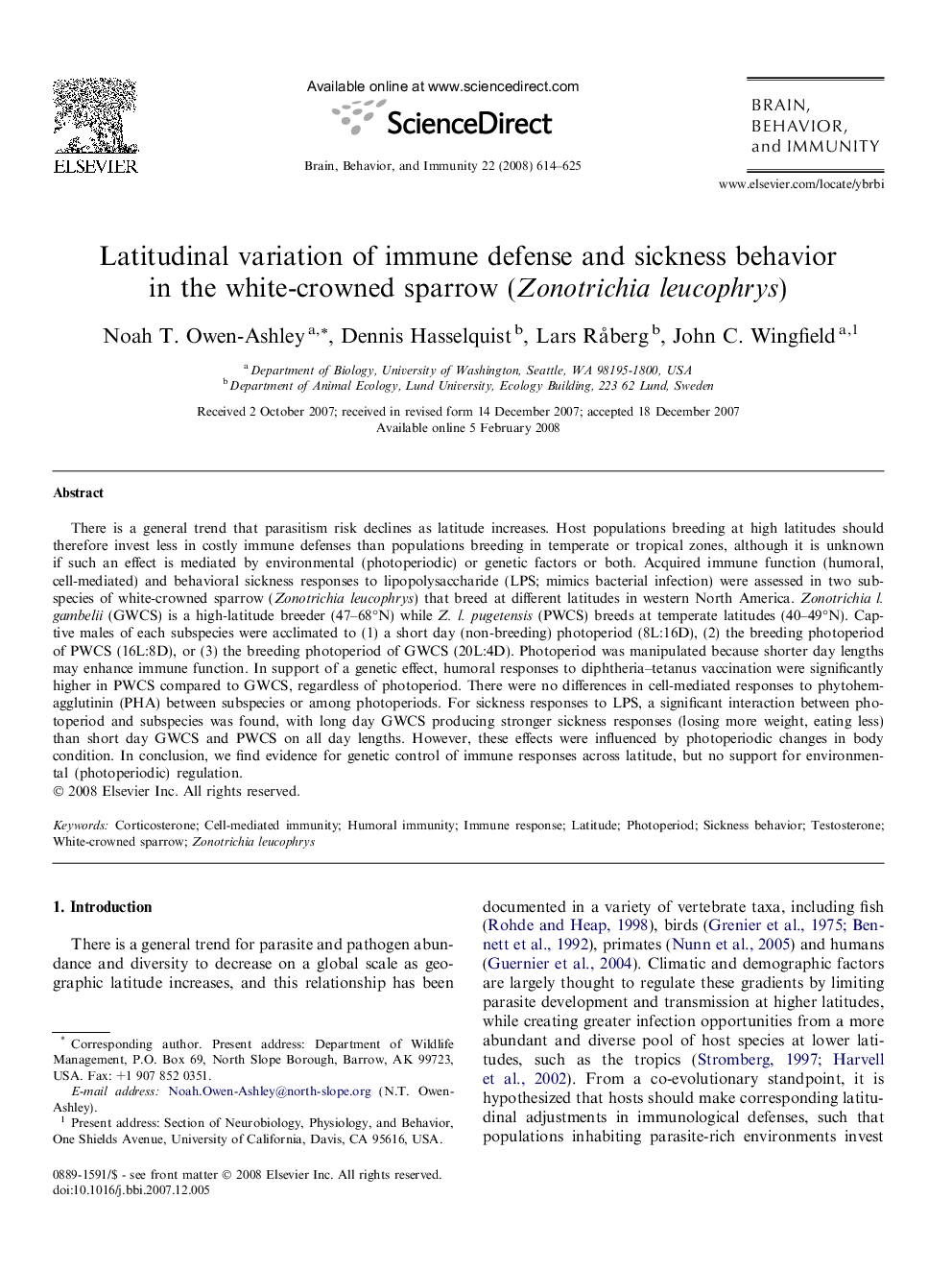| کد مقاله | کد نشریه | سال انتشار | مقاله انگلیسی | نسخه تمام متن |
|---|---|---|---|---|
| 923149 | 921070 | 2008 | 12 صفحه PDF | دانلود رایگان |

There is a general trend that parasitism risk declines as latitude increases. Host populations breeding at high latitudes should therefore invest less in costly immune defenses than populations breeding in temperate or tropical zones, although it is unknown if such an effect is mediated by environmental (photoperiodic) or genetic factors or both. Acquired immune function (humoral, cell-mediated) and behavioral sickness responses to lipopolysaccharide (LPS; mimics bacterial infection) were assessed in two subspecies of white-crowned sparrow (Zonotrichia leucophrys) that breed at different latitudes in western North America. Zonotrichia l. gambelii (GWCS) is a high-latitude breeder (47–68°N) while Z. l. pugetensis (PWCS) breeds at temperate latitudes (40–49°N). Captive males of each subspecies were acclimated to (1) a short day (non-breeding) photoperiod (8L:16D), (2) the breeding photoperiod of PWCS (16L:8D), or (3) the breeding photoperiod of GWCS (20L:4D). Photoperiod was manipulated because shorter day lengths may enhance immune function. In support of a genetic effect, humoral responses to diphtheria–tetanus vaccination were significantly higher in PWCS compared to GWCS, regardless of photoperiod. There were no differences in cell-mediated responses to phytohemagglutinin (PHA) between subspecies or among photoperiods. For sickness responses to LPS, a significant interaction between photoperiod and subspecies was found, with long day GWCS producing stronger sickness responses (losing more weight, eating less) than short day GWCS and PWCS on all day lengths. However, these effects were influenced by photoperiodic changes in body condition. In conclusion, we find evidence for genetic control of immune responses across latitude, but no support for environmental (photoperiodic) regulation.
Journal: Brain, Behavior, and Immunity - Volume 22, Issue 4, May 2008, Pages 614–625